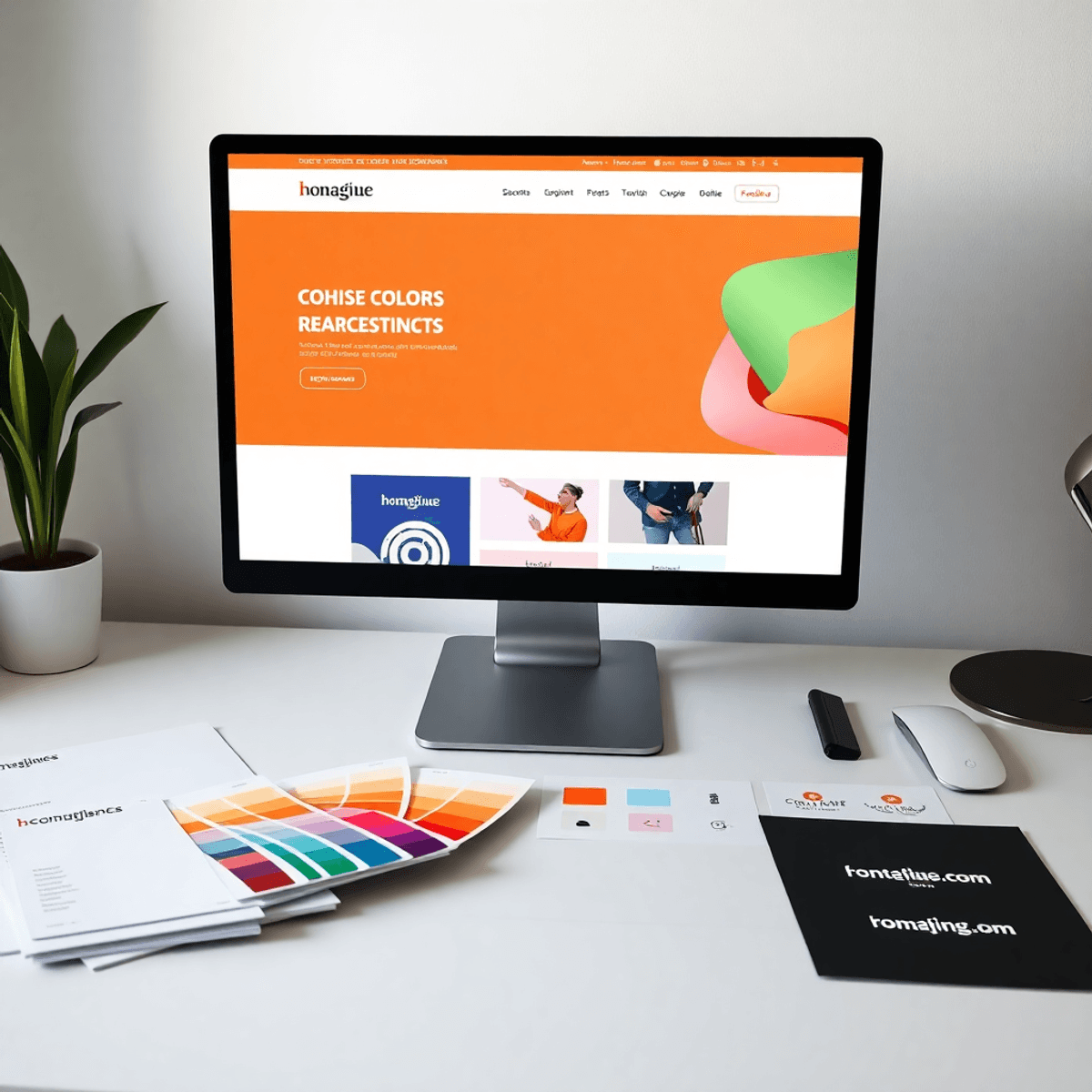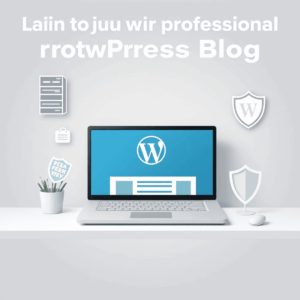Branding is more than just a logo or a catchy slogan. It represents the identity of your business — how you communicate your values, personality, and promise to your customers. Strong branding builds recognition, trust, and loyalty, helping you stand out in a crowded market.
Effective website branding requires consistency across all platforms and materials. Your colors, fonts, tone of voice, and visuals must align seamlessly whether visitors see your website, social media profiles, or marketing collateral. This cohesion creates a memorable experience that reinforces your brand’s message.
A centralized branding asset folder acts as the foundation for this strong brand identity. It houses all essential elements — logos in various formats, color palettes with exact hex codes, font files, templates, and messaging guidelines — making it easy to access and apply your brand consistently. Keeping everything organized saves time and ensures everyone involved remains on the same page.
1. Understand the Core Elements of Your Brand
To create a strong brand identity, it’s essential to understand the core elements that define your brand. These elements include your logo, brand colors, and brand fonts.
Defining Core Elements
Start by defining these fundamental components:
- Logo: Your logo is the visual representation of your brand. It should be unique, memorable, and reflective of your brand values.
- Brand Colors: Colors have a powerful impact on emotions and perceptions. Choose 2 to 4 main colors that align with your brand personality and evoke the desired feelings in your audience.
- Brand Fonts: Typography plays a significant role in conveying your brand’s tone. Select complementary fonts for headers and body text that are easy to read and consistent with your brand voice.
Building Recognition and Trust
Consistency is key when it comes to building recognition and trust with your audience. Ensure that these core elements are used consistently across all platforms and touchpoints, such as your website, social media profiles, packaging, and marketing materials. This reinforces your brand’s image and helps customers easily identify and remember your brand.
By understanding and implementing these core elements effectively, you establish a solid foundation for a cohesive and memorable brand identity.
2. Create a Centralized Branding Asset Folder
A branding asset folder is the central hub for all things related to your brand’s visual identity and messaging. It brings together everything you need to ensure brand consistency across all channels and communications. Without this organized system in place, you run the risk of having scattered assets that weaken your brand’s impact.
Key components to include in your branding asset folder:
- Logos: Versions in different formats such as PNG, SVG, JPEG, including full color, black and white, and transparent backgrounds.
- Color palettes: Hex codes and RGB values clearly labeled for primary and secondary colors.
- Fonts: Downloadable font files (OTF/TTF) used for headers, body text, and accents.
- Templates: Editable files for social media posts, presentations, and marketing materials.
- Swipe copy: Approved taglines, bios, and key messaging snippets.
For solo entrepreneurs, having these assets easily accessible saves time hunting down files. Teams benefit from shared folders that ensure everyone uses the same approved materials. This streamlined approach supports consistent branding in every customer interaction.
3. Develop Multiple Logo Versions for Versatility
Creating logo variations is essential to maintain brand consistency across different platforms and uses. You need to have your logo in several formats:
- Full color – the primary version representing your brand’s identity.
- Black and white – useful for print materials or monochrome displays.
- Transparent background – ensures easy placement on any background without clashing.
Consider different shapes such as square and circle versions, which work better in various social media profiles or app icons. Don’t forget about a favicon—a tiny but impactful version of your logo used in website tabs and bookmarks.
Saving your logos in multiple file formats like PNG, SVG, and JPG improves flexibility. PNG supports transparency, SVG is scalable without quality loss (ideal for websites), and JPG works well for standard images with smaller file sizes.
These multiple logo versions support diverse applications, from website branding to marketing materials, ensuring your brand looks professional everywhere it appears.
4. Establish a Consistent Color Palette with Usage Guidelines
Consistency in your brand’s color palette is essential for creating a strong visual identity. Tools like Coolors.co or Canva can help you select a harmonious set of colors that reflect your brand’s personality. By assigning specific roles to each color, such as headlines, buttons, or backgrounds, you ensure a cohesive look across all your marketing materials. This consistency not only enhances brand recognition but also conveys professionalism and fosters trust with your audience. Remember, every hue speaks volumes about your brand, so choose wisely to make a lasting impression.
5. Select and Save Brand Fonts Strategically
When selecting brand fonts, it’s crucial to maintain consistency in typography to enhance brand recognition. Here are some tips on how to choose and save your brand fonts effectively:
- Choose distinct fonts: Select a unique font for headers that will make them stand out, while opting for a complementary font for body text to ensure readability and style coherence.
- Save font files: Store your font files in OTF or TTF formats for easy access across various design projects.
- Use Canva’s brand kit feature: If you use Canva for your designs, take advantage of their brand kit feature to streamline the design process. This allows you to store all your brand fonts in one accessible location, saving time and ensuring uniformity across different branding materials.
By implementing these strategies, you can establish typography consistency and strengthen your brand identity.
6. Utilize Templates to Save Time and Maintain Cohesion
Creating branded content can be a time-consuming process, but with the help of templates, you can streamline your workflow and maintain consistency across all your materials. Here are some ways you can utilize templates effectively:
Create Editable Templates for Various Platforms
Design templates for different platforms such as social media posts (Instagram/Facebook), Pinterest pins, promo banners, lead magnets, and ebooks. This allows you to have a ready-to-use design that can be easily customized for each specific platform.
Match Templates to Your Brand Style
Customize Templates to Reflect Your Brand
- Use Brand Colors: Incorporate your brand’s specific color palette into the templates to maintain visual consistency and make your content easily recognizable to your audience.
- Consistent Fonts: Choose and use your brand’s designated fonts in the templates to reinforce brand recognition and create a cohesive look across all materials.
- Imagery Alignment: Select images and graphics that resonate with your brand’s values and messaging, ensuring they align with your overall brand style for a harmonious visual representation.
- Strengthen Brand Identity: By consistently using your brand colors, fonts, and imagery in all templates, you not only establish a unified visual identity but also build brand recognition and trust among your audience.
Use Canva’s User-Friendly Platform
Take advantage of Canva’s user-friendly platform to design these templates. Canva offers a wide range of design tools and features that make it easy for anyone to create professional-looking graphics without any prior design experience.
Customize Templates Regularly
To keep your content fresh and relevant, it’s important to update these templates regularly. This could involve making small tweaks to the design or completely revamping them based on any branding changes or promotions you may have.
By utilizing templates in this way, you can save time on repetitive design tasks while still maintaining a cohesive and on-brand visual presence across all your marketing materials.
7. Prepare Swipe Copy to Maintain Consistent Messaging
When preparing swipe copy for your brand, focus on refining key elements like bios, taglines, and product descriptions. Additionally, create a tone guide that outlines voice characteristics such as boldness or warmth. By using consistent phrases and messaging across platforms, you reinforce your brand’s personality and maintain a cohesive brand image for your audience. This approach ensures that your messaging resonates with customers and helps build brand recognition and trust.
8. Store Supporting Visuals Like Headshots or Lifestyle Images
Brand visuals, lifestyle images, professional headshots
- Brand visuals: These encompass all the visual elements that represent your brand, including logos, color schemes, typography, and design elements. Consistency in these visuals is key to establishing a strong brand identity that is easily recognizable across various platforms.
- Lifestyle images: These are photographs that showcase your products or services in real-life situations, helping customers envision themselves using or benefiting from what you offer. They create a more emotional connection with your audience compared to traditional product images.
- Professional headshots: High-quality headshots of yourself and your team members can add a personal touch to your brand. They help humanize your business, making it more relatable and trustworthy to customers. Professional headshots also convey a sense of credibility and competence.
Importance of Visuals
Importance of Consistently Used Images
Storing consistently used images is crucial to reinforce brand identity and create a visual impact that resonates with your audience. When these images are stored in a centralized location, it becomes easier for team members, designers, and marketers to access them promptly when needed. This accessibility ensures that everyone involved in creating content for your brand is using the correct visuals, maintaining consistency across all platforms and materials.
Benefits of Centralized Image Storage:
- Consistency: Having all your brand images in one place helps maintain a unified look and feel across various marketing channels, from social media to print materials.
- Efficiency: Easy access to these images saves time for team members who no longer need to search extensively for the right visuals.
- Brand Recognition: Consistently using the same images helps build brand recognition among your audience, as they begin to associate specific visuals with your company.
- Adaptability: With quick access to stored images, you can easily adapt them for different purposes or campaigns without compromising brand coherence.
By prioritizing the storage of consistently used images, you establish a strong foundation for effective visual storytelling and brand communication.
Visual Storytelling
Utilizing lifestyle images and professional headshots can enhance your written content, adding a personal touch that connects with customers on a deeper level.
9. Share and Update Your Branding Assets Regularly
Sharing your branding assets with team members or freelancers is crucial for maintaining a cohesive output. By granting access to these assets, you enable collaboration and foster consistency in how your brand is represented.
Keep Your Assets Updated
It’s important to regularly update your branding assets to reflect any changes in design, messaging, or visual identity. This ensures that all materials are in line with the latest brand standards and effectively communicate your brand’s message.
Securely Back Up Your Assets
To protect your branding assets from loss, make sure to store them securely on cloud services or external drives. This way, even if something happens to your primary storage, you’ll still have a backup of important brand elements that can be easily retrieved when needed.
10. Use Your Strong Branding to Scale Your Business Efficiently
Strong branding is a powerful tool for business scaling through branding. When your branding assets are organized and accessible, you eliminate guesswork during content creation. This reduction in decision fatigue frees up your creative energy, allowing you to focus on strategic growth activities.
Benefits of brand consistency include:
- Faster production of marketing materials without sacrificing quality
- A unified brand presence across all customer touchpoints
- Enhanced recognition that builds trust and credibility quickly
Trust is a critical factor in purchasing decisions. Consistent use of logos, colors, fonts, and messaging creates familiarity. Familiarity leads to confidence in your products or services, which often translates into repeat business and referrals.
Scaling becomes more efficient when your brand identity acts as a solid foundation rather than an afterthought. You save time onboarding new team members or freelancers because your centralized assets provide clear guidance. This clarity accelerates project delivery and strengthens your market presence simultaneously.
Conclusion
By implementing these tips, you can elevate your business brand effectively. Remember, a strong brand presence is crucial in today’s competitive market.
If you’re looking for professional website branding solutions that integrate seamlessly with your established brand assets, look no further than Modern Warrior Sites Hosting and our SAAS services. With our expertise, we can help you create a powerful online presence that leaves a lasting impact.
Don’t miss out on the opportunity to enhance your brand. Start building your professional website today!




